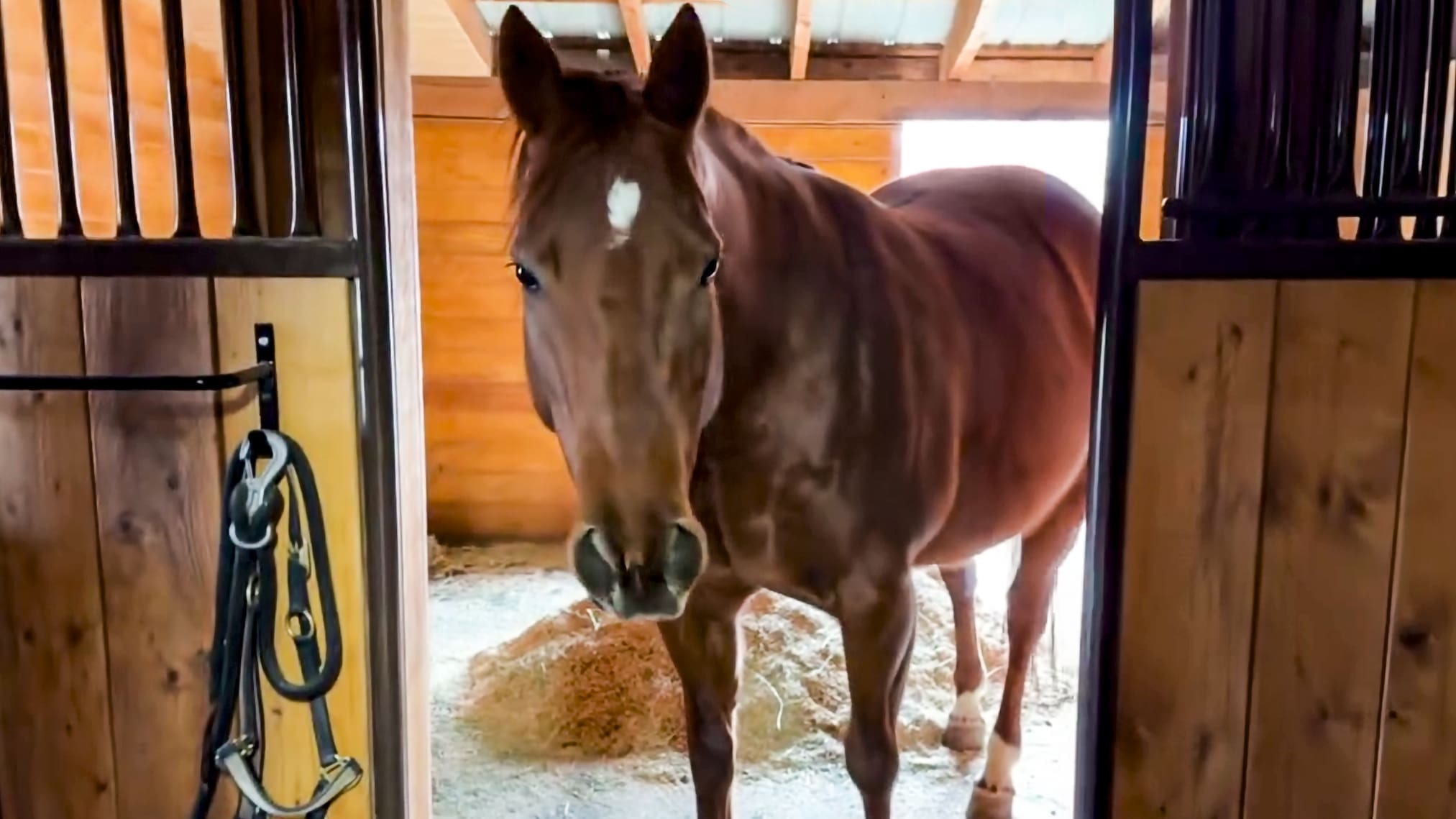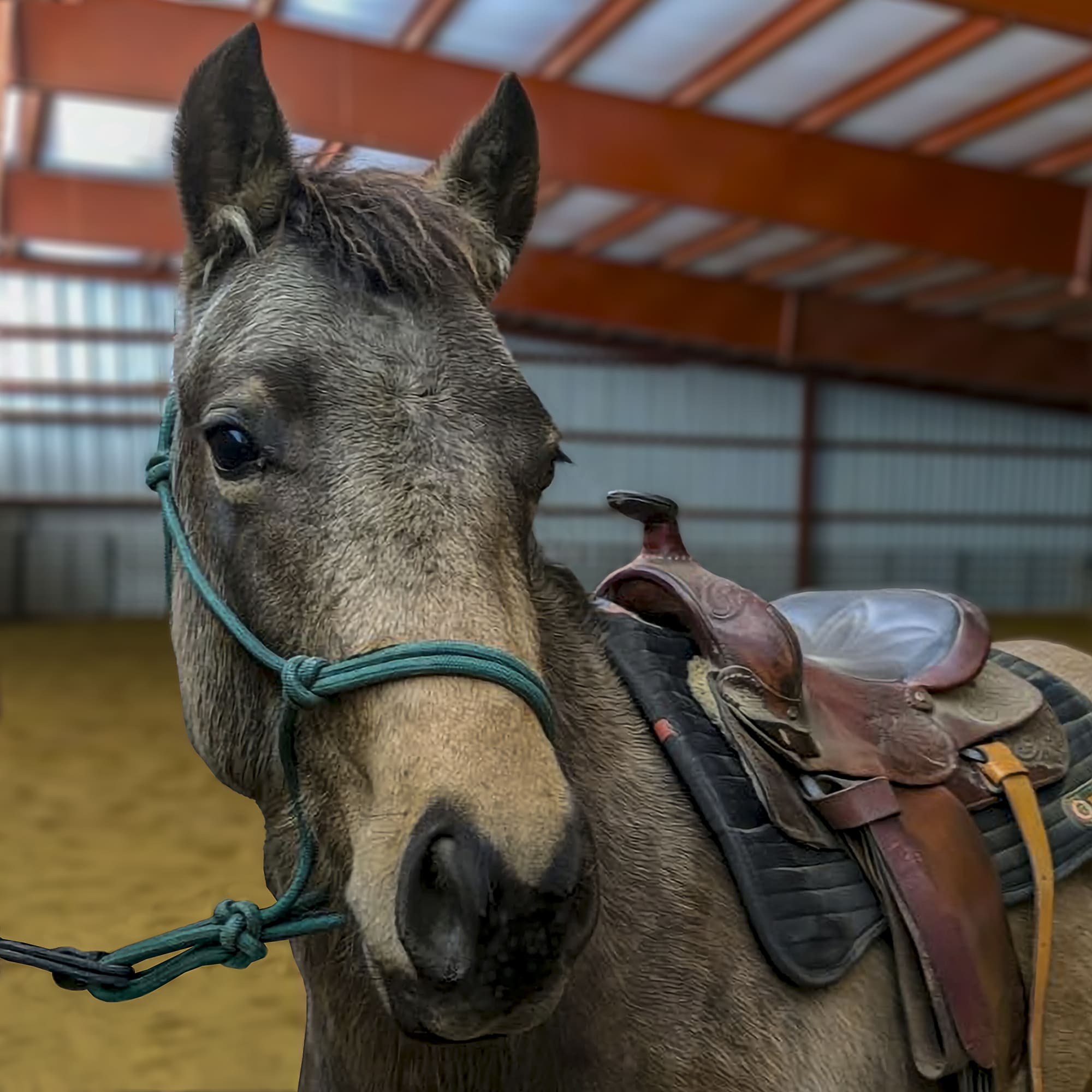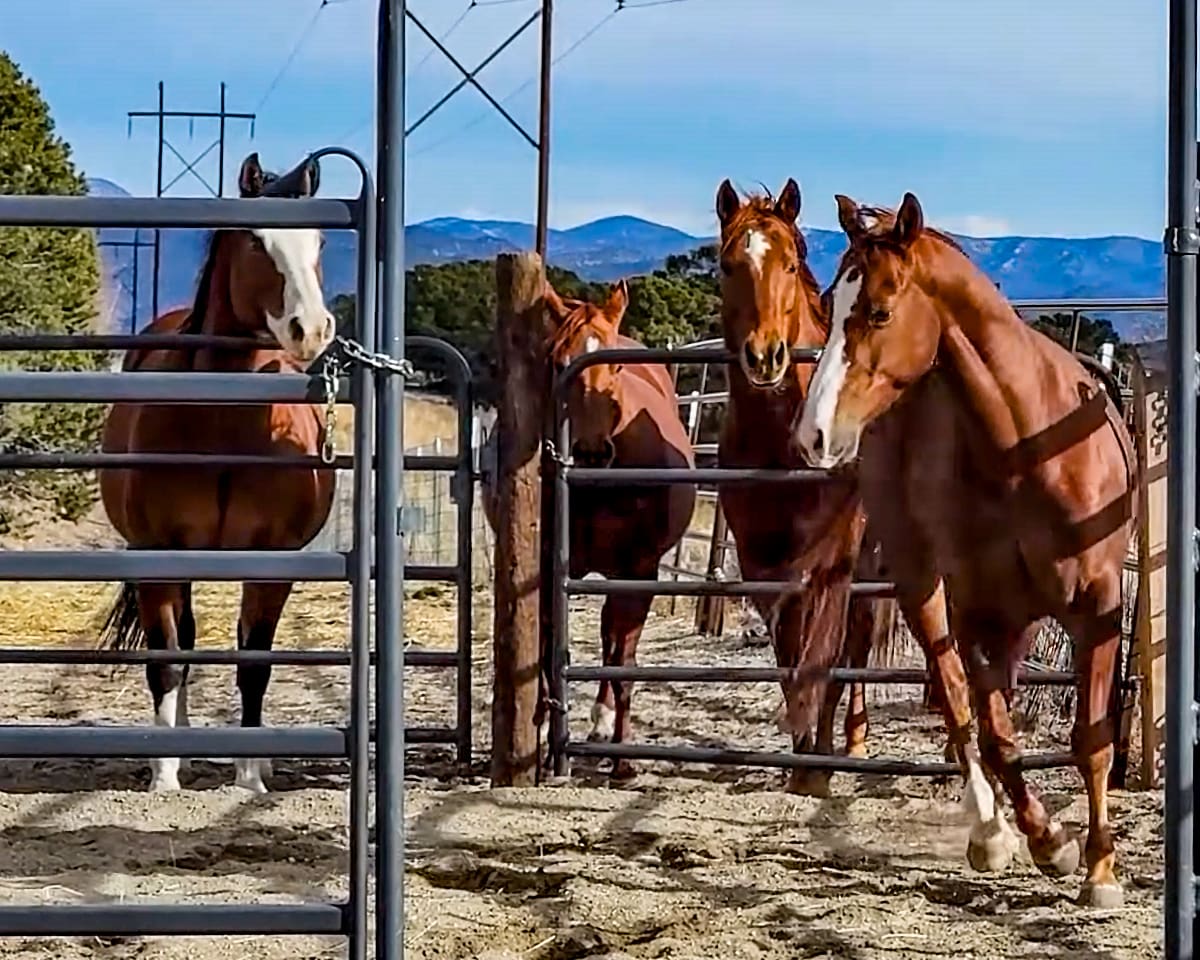Question: Julie, I have a question about how to be more comfortable during my long rides. What causes my knees to hurt after about an hour riding at a walk? What can I do to stay comfortable in the saddle?
Answer: Being comfortable in the saddle is crucial for long rides. Joint pain is a complaint I hear about often. I’ll share some tips about proper alignment then help you consider the tack and riding gear that can help or hinder your comfort as you ride.
Line it Up
I hear riders ask about their feet falling asleep or of constant knee pain when they ride. When you sit on a horse, your legs are being spread apart and the unnatural alignment causes pain over time.
When you’re sitting on your horse, your alignment changes from the posture you use to stand upright. Your legs are wrapping around the horse’s barrel instead of hanging straight down. To get the picture, imagine sitting on the long side of an oil barrel with your legs wrapped around. Because of your position, your joints come together at angles instead of in their usual straight alignment. Your knee and ankle joints now have uneven pressure and that causes pain.
The solution is pronation (rotational movement of a joint). With this move, you’ll bring your ankles back toward your midline. When you’re sitting with your legs spread around the horse without pronating, your ankles roll to the outside and also impact your knees. To correct that alignment with pronation, flex your foot so that your weight rolls toward your big toe. This simple move realigns the bones that comprise the knee and ankle joints. It reduces the pressure and the pain after a long ride.
You can try this while you’re sitting in a chair, too. Roll your foot toward your pinky toe and press your weight down to your feet. You can feel the strain on your ankles and knees. That’s what it feels like without pronation. Then roll your foot toward your big toe. Notice that it’s easier to hold this pronated position.
If you were taught to ride with your toes straight ahead and your heels pushed far down, it’s time to reconsider your alignment. Keeping your toes straight ahead isn’t helpful for ergonomic riding. In this position, you can’t pronate your ankles and you don’t have your lower leg available for cueing your horse. No matter what your riding instructor said when you were young, it’s fine to have your toes pointed out a little. To feel better in the saddle, you need to allow yourself to turn your feet out slightly. I’m not talking about pointing your toes directly east and west—just relax enough to allow your legs to hang more naturally.
Tack Evaluation
You’re only in balance when your skeletal system is in alignment. When you’re sitting on your horse, you should have a straight line running down from your shoulder, through your hip and down to the back of your heel. Your saddle can help or hinder this position.
While you may think all saddles should help you be in a balanced position, it’s just not true. If your stirrups hang far forward, you can be pulled out of alignment. Stirrups that hang forward put you in a “chair” position that may seem comfortable at first, but can cause you to push down or reach for your stirrups and stiffen your legs. If your stirrups hang straight down from the saddle’s seat when you evaluate it on a saddle rack, your saddle will help you be in a balanced position throughout your long ride. If your stirrups hang far forward, consider shopping around.
If you find your seat bones hurt after a long ride, your saddle may have too wide of a twist—the part of the saddle just in front of the seat that rises toward the pommel. If the twist is wide, it will push your legs farther apart and causes pressure onto your seat bones. Your entire body weight then pushes down onto your seat bones in that spread position. That doesn’t feel good after a long ride. Look for a saddle with a narrow twist to avoid sore seat bones.
Dress the Part
While your clothing might not directly impact your joints, it does impact your overall comfort on the trail. If you ride in jeans, make sure that the inside seams aren’t bulky. If you shop for jeans made for riding, you’ll notice that the bulkiest seams are on your outer leg—not inside. If there’s too much fabric inside, you can get sores at your knees from rubbing against that extra fabric.
If you’re riding for long days and it’s not too hot out, try wearing silk long johns under your jeans. The light layer can help with chaffing and can help you avoid saddle sores. If you’re going to be riding for several days, you need to make sure your joints and your skin stay in the best shape possible.
To keep my skin in good shape, I make sure to carry big Band-Aids and Cortisone cream. Cortisone will help with chaffing and will help you ride without changing your posture to avoid further rubbing your saddle sore. You won’t ride correctly if you have a saddle sore on the inside of your knee so taking care of your skin can help your overall posture and alignment, too.




No comment yet, add your voice below!